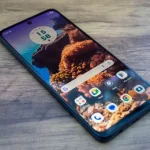It is difficult to take the perfect photo underwater not only because of all the expensive equipment, training, and other tiresome preparations that are needed in order to qualify professionals for underwater photography, but also because of underwater lighting issues. As photographers descend deeper, lighting in water becomes a significant issue and pictures taken at great depth become ill-defined and have a distinct green hue.
What is the Cause
This phenomenon is caused by water’s ability to absorb electromagnetic waves. Light, which has the properties of waves, is made out of the color spectrum and each color has its own distinct wavelength. Water can absorb the waves with the longest wavelength first because they have the lowest energy. As a result, the color red which has the longest wave length becomes the first color to be absorbed in water, then orange and onwards until every spectrum disappears. To be specific, all red colors are lost at around 15 feet deep, and by 25 feet all orange colors are lost. This depletion of red leaves the green and blue hues to be the only colors visible in deep water situation.
How to Combat this Issue
Whereas our eyes have the capability of adjusting to the lost of color, underwater camera lacks the ability to automatically calibrate according to underwater lighting conditions. Photos taken in deep water will look green, murky, dark and lack contrast. One method to correct this problem is to use colored filters. Red or magenta filters can help reduce the green tint by suppressing the green shade and normalizing the coloring by adding red to the picture. Photographers can also bring along their own artificial light source to brighten the view. However, both options requires investment in relatively expensive apparatus, and neither can completely reverse the effect of color loss.
Color Correction
Another technique that can improve underwater pictures’ quality is to use graphics editors programs, such as Photoshop, and manually correct the images’ tone. This process is also know as color correction. Color correction through graphics editors can be quite a hassle, as users must use an assortment of filter options, change exposure and contrast settings, or even have to add certain pigments on to the image. Thus, this procedure takes a long time and a considerable amount of effort to complete, even for specialists. On the other hand, this approach also yields the best result and often transforms substandard raw underwater photos to vivid images if done correctly.
Navatic’s Alternative Solution
Navatic’s offers a simple solution to revert the blue tint caused by underexposure in deep water conditions and make the pictures regain a vibrant hue. With one tap on the Navatics app, users can alter the pigments of photos that had been taken by MITO and make the images look more pristine and natural. This is done through a complex algorithm that analyzes the depth of the images and samples certain colors on the image to create a parameter. The program then uses that parameter to alter the color of every pixel on those photos.
MITO can quickly and efficiently maneuver in water and take photos in many angles with its tilt lock function. Navatics app can quickly enhance the underwater pictures taken by MITO. Navatics ensures that underwater photography would no longer be a difficult task but rather a simple activity.



